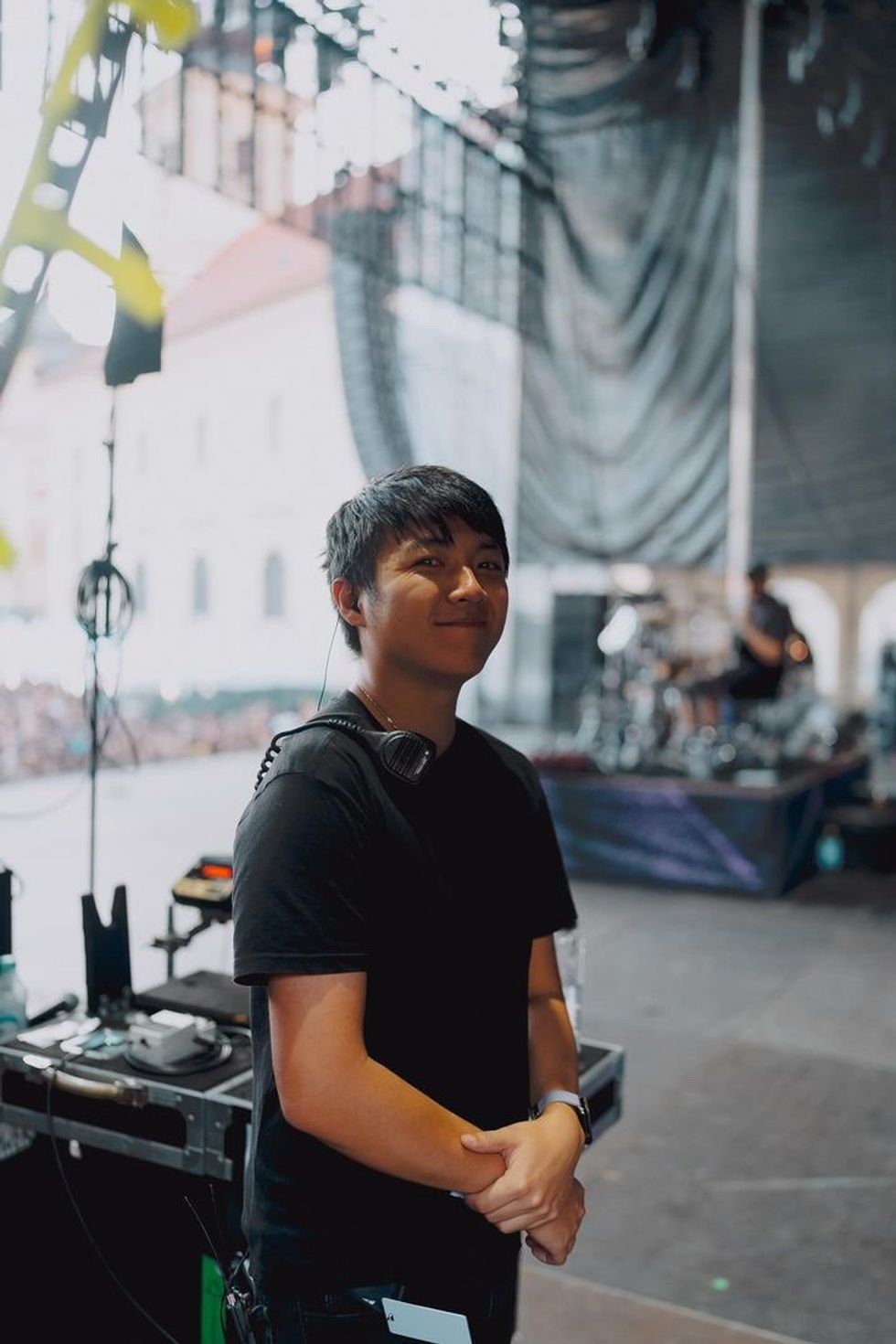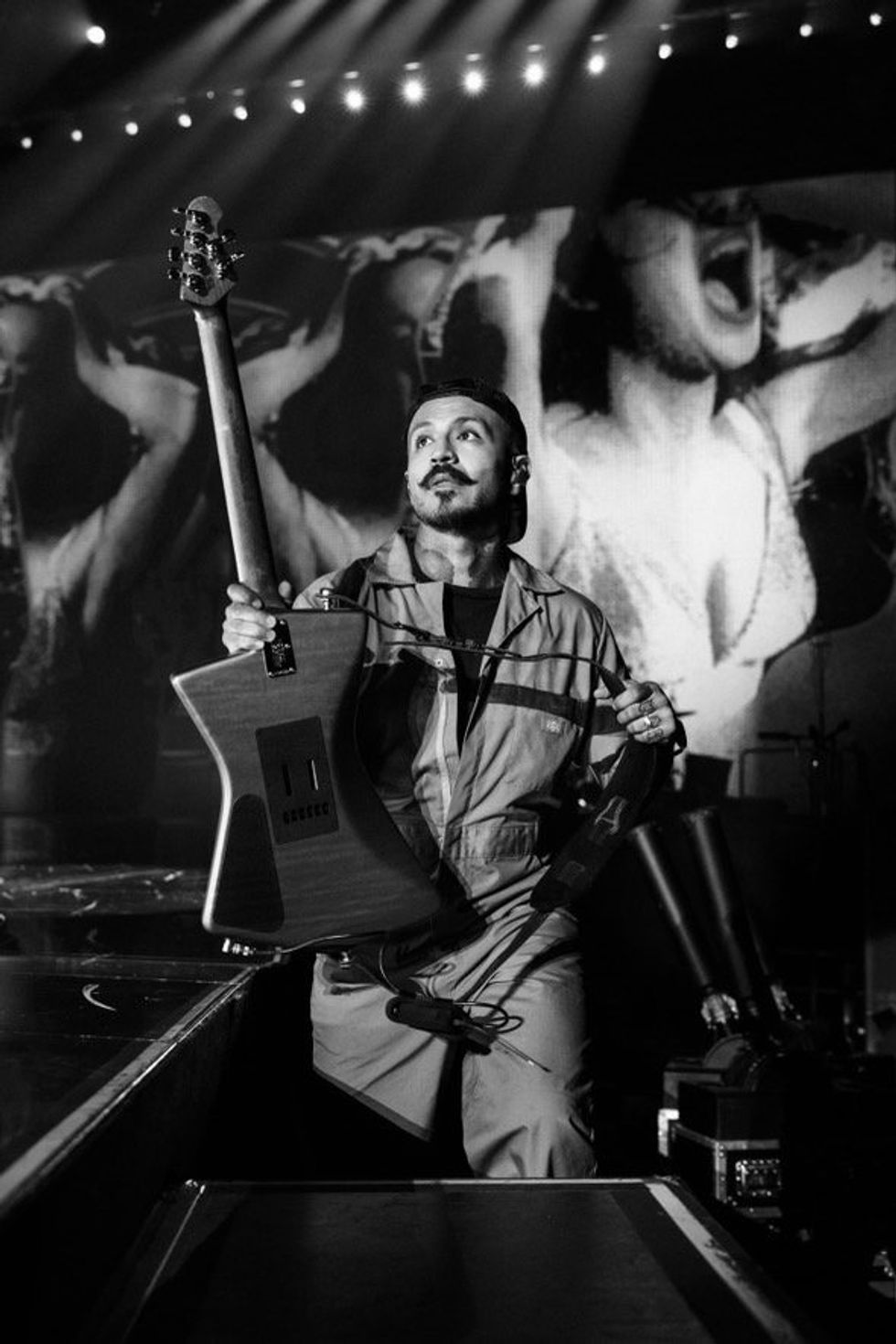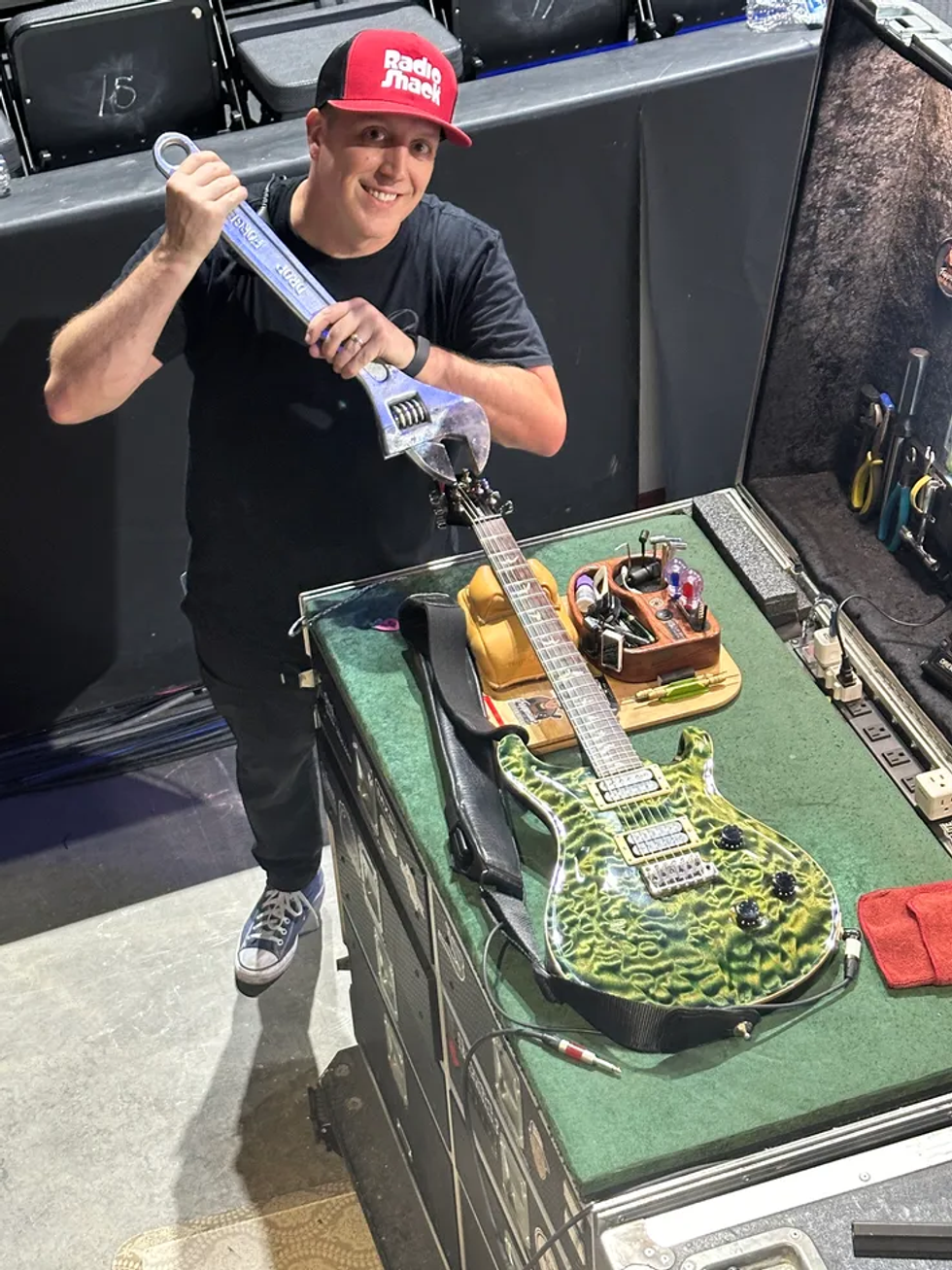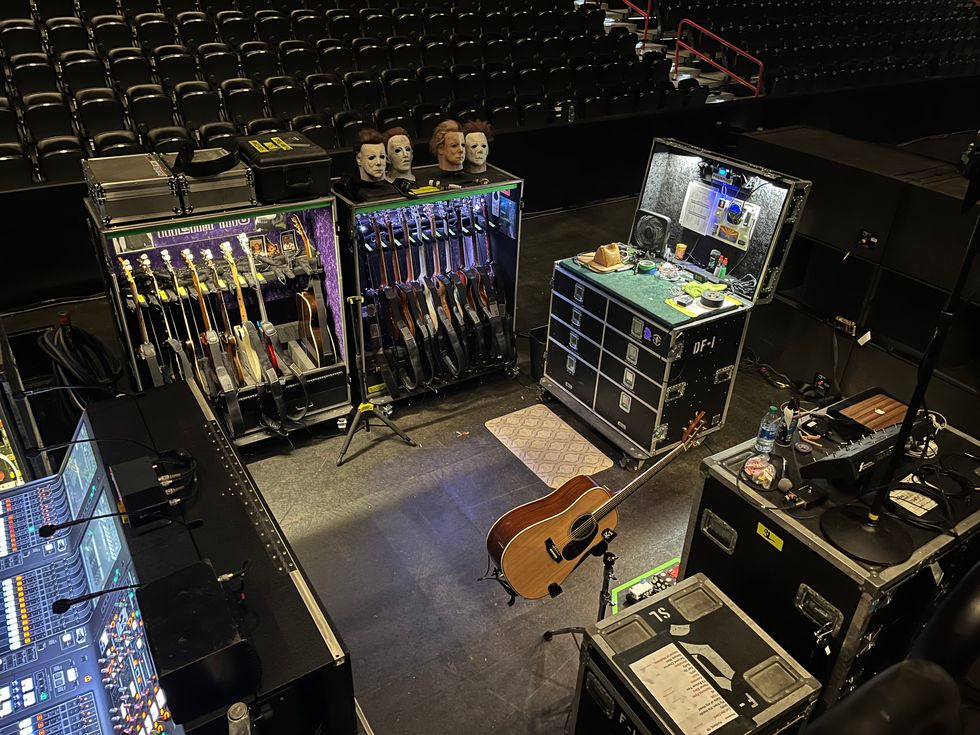It’s virtually impossible to make a living in 2019 as just a guitarist. You need to be a composer, audio engineer, videographer, tour manager, educator, and more to put a dent in guitardom.
“In high school the idea of being a professional musician means you’re a rock star or something,” says Mark Lettieri. “Because of the naivety of youth, you don’t really know about all these other things that you can do or different ways to make a living doing it.”
But today, Lettieri has learned them all. In the past year, he has hopped between recordings and tours with Snarky Puppy, crafted his riff-showcasing “Baritone Funk” videos (on Instagram and YouTube), done sessions for everyone from Kirk Franklin to Erykah Badu, played Radio City Music Hall with Dave Chapelle, cut an EP with Vulfpeck spin-off the Fearless Flyers, and led his own trio on international tours. Each one of these situations calls for Lettieri to adopt a different approach and mindset.
There’s a whole middle class within the music business that Lettieri didn’t begin to explore until after college. At Texas Christian University, he chose not to be a music major, but rather to head into the family business of public relations and advertising. “The music thing was a really important hobby at that point,” he remembers. “It was a hobby that I was really passionate about, but the idea of doing it as a career wasn’t my focus.” After college, PR and advertising jobs were scarce, so Lettieri joined up with a locally based touring country band that lead him to a brief cameo in a Bud Light commercial.
Lettieri would hit the blues jams on Sunday nights in the Dallas-Fort Worth area and take any gig he could get—including one that found him performing a single song for a corporate retreat. A pharmaceutical company had re-written the lyrics of Kelly Clarkson’s “Stronger” into an ode to synergy, meeting quotas, and corporate strategy. It was a very bizarre gig. “I showed up and got paid, like, $800 for one song. But the band was slamming,” he says.
It wasn’t until 2008 that he entered the Snarky Puppy ecosphere. The collective was centered around Denton, Texas, and, more specifically, the music department in the University of North Texas. Through a series of musician friends, Lettieri received a call from head Puppy, bassist Michael League. The band was working on Bring Us the Bright and League needed some seriously funky guitar. Lettieri was on an R&B gig when the call came, but headed over to the studio at midnight and played a couple of passes on “Strawman” and went home.“A bit later, Michael called me for some gigs. I had to learn some really hard tunes in, like, three days for a Mardi Gras gig,” says Lettieri.
Since then, Lettieri has become a member of the seemingly ever-growing Snarky Puppy circle, and trades off on gigs with other two guitarists: Chris McQueen and Bob Lanzetti. The Pups hit the road—hard—and especially this year, after the release of their latest album, Immigrance, which features Lettieri, McQueen, and Lanzetti throwing down at the same time. With 12 to 15 or more members, depending on the day, it can be hard to find a musical place within such a large and dynamic group. A testament to Snarky Puppy’s composing and arranging is how well each member gets time to shine somewhere on every album. On Immigrance’s “Chonks,” a League composition, Lettieri rips through the mid-tempo stomp-groove with a rhythmic precision that extends throughout the arrangement.
Between Snarky Puppy gigs and sessions, Lettieri prepared two completely different solo albums for 2019. The first was Deep: The Baritone Sessions, which came out in March and was born of his newfound life as a baritone funk guru. In late 2016, Lettieri started to post brief videos of original funk riffs on a baritone guitar. They started as practice vids, played to either a ’70s funk classic or an EDM-ish loop that Lettieri programed in Logic. Lettieri later realized he was actually doing a form of pre-production.
Things of that Nature, set for release this fall, is Lettieri’s fourth full-length album as a leader and is easily his most progressive and melodic. If all you know of his playing is super-hip funk with deep shred influences, then you’re in luck, because it will give you exactly what you want and more. The album features his longtime trio of Jason “JT” Thomas on drums and Wes Stephenson on bass, along with cameos by fellow Snarky Pups Shaun Martin, Bobby Sparks, Justin Stanton, and Bob Reynolds. Before a recent trio tour of Europe, PG caught up with Lettieri to discuss his early days in the Dallas R&B scene, his approach to composition, and learning from David Crosby.
You grew up in the Bay Area. What initially inspired you to play guitar? Did you grow up in a musical household?
My dad plays a little bit of guitar just as a hobby. He had an acoustic guitar in the house that he would play every now and then, and I’d just mess around on it. Obviously, I didn’t know what I was doing. I was around 12. It’s just one of those adolescent things where you’re at the age where you discover music for yourself and with your friends. Thankfully, my parents had really great taste in music, so I grew up with great music around the house: everything from Aretha Franklin and Stevie Wonder to the Eagles and Jackson Browne and the Byrds. But you know, when you’re 12 and you’re hanging out with your buddies, you just want to go listen to the alternative rock station.
At what point did you get friends together and start to play?
It happened almost immediately. The first time I ever played a gig was in my backyard for a family member’s birthday party. My friend and I were both learning guitar at the same time and ended up with the same guitar teacher, Alison White, who taught us how to read tab. She had a recital for all her students, and the two of us played an instrumental version of Everclear’s “Heartspark Dollarsign.”
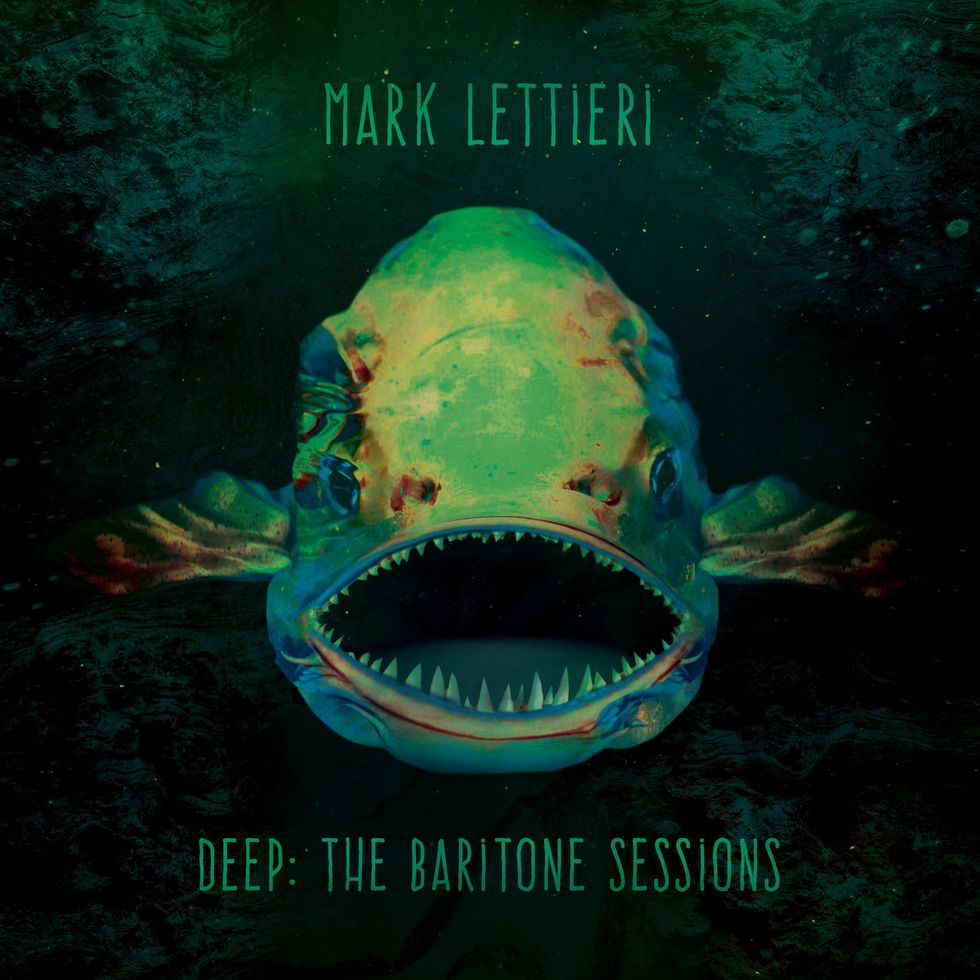
TIDBIT: Not a single tube amp was used for the guitar tones on Deep. All of Lettieri’s sounds came from a Kemper profiling amplifier and a batch of Michael Britt’s profiles.
When did you veer off and start to play music that wasn’t on the radio?
My friends and I were learning songs and jamming, and we are always playing stuff like Hendrix and Stevie Ray Vaughan. Everyone got into Joe Satriani, since he was a local guy. The biggest guitar experience of my life was seeing him on Halloween night in San Jose in ’98. We would play the Third Eye Blind stuff, because we knew girls at parties would like it. You can’t necessarily just play Joe Satriani’s “House Full of Bullets” at a high school backyard party.
Many musicians view the transition from high school to college as a way to get really serious about music. Was that the case for you?
I was a different breed of musician, in that I was pretty academic, but athletics were also important for me in college. I wanted a degree that was interesting and useful, which in my case was advertising and public relations. That’s what my parents did. They were both PR people. The music thing was a really important hobby at that point. It was a hobby that I was really passionate about, but the idea of doing it as a career wasn’t my focus. I was there to study and do sports and find a band and play on the weekends.
Your college band was well before you joined Snarky Puppy, right?
Yes. It wasn’t a jam band, but we jammed. It was sort of like a funk-rock-pop thing. We brought in our own tunes and we were, to my ears, one of the only power trios that was really grooving. The drummer was a friend from the TCU gospel choir, so he had a little bit of that sound.
Was that the point where your funk-rock influences came out in earnest?
Yeah. By the end of high school, I had started listening to Stevie Wonder and George Clinton and Steely Dan. I remember my friend got a Brothers Johnson album and we’d freak out over it. Of course, there’s guitar involved in all that, but the focus is the groove, and the chord progressions were different than what I was hearing in Megadeth.
When did you first get into baritone guitar?
I think the first time I played one was on a recording with this band that I continued to be a part of outside of college. We were just recording a tune that was a rock ballad thing, and the engineer was like, “You want to try a baritone guitar?” I didn’t know what that was. He brought it out and I got a feel for it and I played this very basic thing. And I thought, “well, that was neat” and then completely forgot about it. I used one on a few Snarky Puppy songs, but it was still just a chordal, textural thing. The idea to use it as a groove instrument was something that I just discovered. The light bulb went off and I thought “Why am I not playing funk on that?”
Let me back up. In the summer of 2015, I wrote this tune called “Jefe” on baritone and I thought it might work for Snarky Puppy. It was a groove thing on a baritone guitar, and there was something about it that was really satisfying to me. I love bass. I love bass players. I love bass playing. But I love funky guitar and groove guitar playing, so it’s kind of a happy medium. Then I started doing those silly internet videos.
During Snarky Puppy’s GroundUP Music Festival in February 2019, Lettieri played guitar for one of the band’s three headlining sets. This year’s festival gave Snarky Puppy a chance to debut the music from their latest album, Immigrance.
Photo by Stella K.
Those videos on Instagram really took off. What was your process for putting those together?
I think the first Instagram stuff I ever did was all done with an iPhone. I didn’t know what I was doing. When I started doing the baritone thing, I was running through a Kemper and recording it in Logic and then syncing up the audio to the video. All the drums are programmed by me, and I played everything. It was simply, “Here’s a goofy kind of little funk track,” and the response from people was not something I expected at all. Once I noticed people were really responding to it, I felt I had to make it into an album because I would have been wasting a lot of stuff if I didn’t.
How did your musicianship improve after doing a whole album of baritone funk?
It helped me learn how to arrange guitars. A lot of what I do here at the home studio is produce my own guitar parts for records. Almost everything that comes through here is remotely done with varying degrees of direction from clients. Sometimes they’re very specific, but most of the time I have to read someone’s mind, which is really hard to do. The album was just another extension of arranging parts and stacks and different things to get the most out of a tune without maybe overdoing it—even though on a couple of songs I overdid it on purpose.
It sounds like “Stoplight Loosejaw” was one of those.
There are a ton of guitars on that song—on purpose. I wanted people to be looking left and right when they heard that song on headphones. And then when you try to play it, they would be like, “There’s no way I can play all this. I need 42 guitar players to play this live.”
Do you think any of these songs will make it into the trio’s live set?
That’s the problem I’ve created for myself. Tell you what, if people buy the record instead of stream it on Spotify, there’s a chance I can afford to put together a band large enough to come play the record in your town.
What type of band would you need to pull it off?
I could do with a keyboard player who had a couple keyboards, a drummer, a bass player. Then it gets difficult. Probably three guitar players. “Stoplight” is baritone, standard guitar, and 7-string guitar. I could maybe do that one with a 7-string and baritone, but the baritone record has so many stereo stacks, which are essentially horn parts, played on guitar. It’s not impossible; it’s just a logistical nightmare.
From what you described, that college band sounds a lot like what you are going after with your solo albums.
Yeah, it probably is an extension. That’s always been my thing: instrumental guitar stuff with melodies, harmonies, and riffs. But I try to keep an emphasis on the tunes, at least in some respect. Maybe I have split personalities or something. For example, if you go to my Instagram, you probably have no idea what kind of guitar player I am because there’s all kinds of crap up there.
When you write a tune, do you have a specific group or instrumentation in mind?
I try to make everything work for the smallest amount of people possible. Maybe subconsciously. Most of the stuff I write would be a stretch to think it would work for a large ensemble. I just haven’t matured in that way yet. A majority of the writing I do, I plan on using for the trio because I have an outlet for it and the ability to play it with people and for people. I have to be honest with myself. I need to get that music out because deep down inside there’s a 13-year-old kid and that’s what he wants to do.
I can totally hear you cutting through everything on Snarky’s “Bad Kids to the Back.”
I played baritone and regular guitar on that. I’m trying to think how they mixed it. Sometimes it’s kind of weird who they put to what side. I have to go back and listen to it. Well, I should listen to it, since I have to play it on tour. [Laughs.] But yeah, there’s definitely some Lettieri-esque comping rhythm, but Justin [Stanton, trumpeter and keyboardist] actually programmed a lot of that stuff for us to play with our interpretation.
Also, I thought that was you playing the second solo on “Chonks.”
A lot of people did. Bobby [Sparks, keyboardist] played that through my Supro Statesman head. I don’t know what he used for pedals, but it’s Bobby, so he probably turned them all on. He phrases like a guitar player, which is really cool. Bobby’s really funny. He’s like “Man, you know, I love guitar but, like, the feeling of the strings makes my skin crawl, man. I can’t do it.”

Guitars
Don Grosh NOS Retro
Fender/Don Grosh hybrid Stratocaster
Ibanez AZ2204
PRS McCarty 594
Collings I-35 LC
California Artist Guitars Artist Series T
Kiesel Solo 7
Bacci Leonardo
Danelectro ’56 U2
Supro Hampton
Martin 000C-1E
F-Bass Hammertone
Amps
Supro Statesman
Naylor Duel 60
Pure Sixty-Four Mean Street Gen III
Kemper Profiler
Suhr Reactive Load
Effects
J. Rockett Melody overdrive
J. Rockett GTO overdrive
J. Rockett Dude boost/overdrive
MXR Bass Octave Deluxe
MXR Blue Box
MXR Super Badass
MXR Phase 90
TC Electronic Nova delay
TC Electronic Hall of Fame
TC Electronic Brainwaves pitch shifter
TC Electronic Sub ’nʼ Up octaver
Way Huge Conquistador fuzz
Vertex Dynamic Distortion
Empress Effects Tremolo
Keeley Monterey rotary fuzz/vibrato
Line 6 M5 Stompbox Modeler
Strings and Picks
Dunlop Nickel-Wound (.095–.044, .010–.046)
Dunlop Nickel Wound for baritone (.013–.068)
Dunlop celluloid heavy picks
Let’s talk about the Jeff Beck influence on “Seuss Pants” from Things of That Nature. You really nailed how to phrase vocal-style melodies with the whammy bar.
I hope I don’t get sued by Jeff Beck. [Laughs.] I was practicing some new intervallic melodic things and just happened to have the whammy bar in my hand. That song came together in about a day or two. And then the title was just named after the pair of my wife’s pajama pants that have this really wild print on them. We just call her “Dr. Seuss pants.”
One thing I hadn’t heard you do on a recording is play acoustic and slide. Both are featured on “Ojai.” Did you write that in Ojai, California?
No, but the inspiration for that tune was David Crosby. It uses a tuning that he taught me. The tuning is C–G–D–D–A–E. It’s like an open 6/9 chord. I’m super self-conscious of my acoustic playing because I never really do it publicly, although I do some fingerstyle stuff on pop and gospel sessions. I just wanted a simple thing based around that tuning. I almost didn’t put it on the record because I was so nervous about my playing.
With so many different sounds and projects coming out this year, what’s your guitar/amp setup like? Other than the baritone stuff, do you start with a certain combo and move from there, depending on what’s needed?
I took almost everything to the studio. The guitar tracks are a blend of either a Supro Statesman, Pure Sixty-Four Mean Street, or a Naylor Dual 60. My engineer and I blend those amps all the time, so that was a big part of it, and I used a Kemper on a couple of songs.
Did you run a stereo setup with multiple amps or just a dual mono?
Yeah, dual mono. Exactly. In fact, I think all of the guitars on “Seuss Pants,” for example, were a blend of the Kemper and the Pure Sixty-Four, which I combined with a Suhr Reactive Load.
What were some of your favorite profiles in the Kemper?
I think I used a 3rd Power profile on that tune. I used all of Michael Britt’s stuff, and going back to the baritone record … that’s all Kemper. There are no “real” amps on that, and I used a bunch of different profiles.
“Naptime,” from Things of that Nature, opens with a hip funk riff. Sounds like the title was inspired by your life as a new dad.
That’s exactly what it is. “Naptime” happened because my kid was asleep for an hour and I felt like I should do something productive with music. I had that main riff stored in my phone somewhere. That song happened very quickly. “Seuss Pants” happened very quickly. “Blockheads” took a little more time because I rearranged a lot of it. Same with “Bubinga,” which is on the 7-string.
As if you didn’t have enough albums coming out this year, the Fearless Flyers just released a new EP, Fearless Flyers II. How did that collaboration come together?
I guess it was [Vulfpeck leader] Jack Stratton’s initial idea, and then I got an email from [Vulfpeck guitarist] Cory [Wong]. I had never met him, and I had never met Nate [Smith, drummer]. Of course, I knew about all the guys. Cory just emailed me through my website. They didn’t say anything about the kind of music, which is interesting. I called him and initially I wasn’t really sure if I wanted to do it, because I just didn’t know what was going on. So we talked, and I was like “Well, let me think about it.” After I thought about it, I realized I would be stupid not to do this. So, I called him back and said, “Yeah, sorry. Let’s do this.”
Going into those sessions, you still didn’t have any real idea about what it was about?
I remember asking “Do you want me to bring in any songs?" They said we would just do it all there in the studio. I brought a pedalboard that I had put together, specifically to get a lot of sounds from the baritone funk videos I was doing at the time. They said “We’re not going to use any of that. We’re just going to plug into the computer.” Also, we had to wear flight suits and our instruments were on these stands. I was thinking, “When’s lunch?” [Laughs.]
Taking that chance has now led to a gig at Madison Square Garden. What’s it going to feel like when you step out on that stage for the first time?Well, I won’t be able to step that far, because I’ll be standing behind a guitar that’s bolted onto a mic stand. The dream of me running out and playing rocking guitar solos is not going to be fulfilled that day, but I might just have to rip it off the stand and just drag that sucker out there.
This live take on “Seuss Pants” was filmed during a residency in Dallas with Lettieri’s working trio of Jason Thomas on drums and Wes Stephenson on bass. The decidedly Jeff Beck-ish melody was born out of a practice session where Lettieri was focusing on improving intonation with the whammy bar.


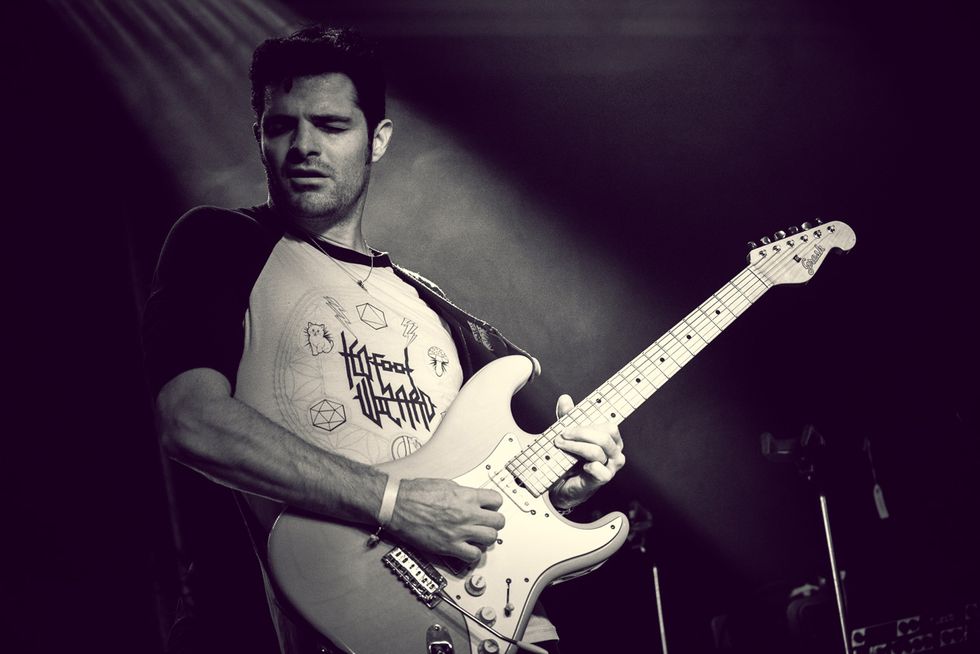
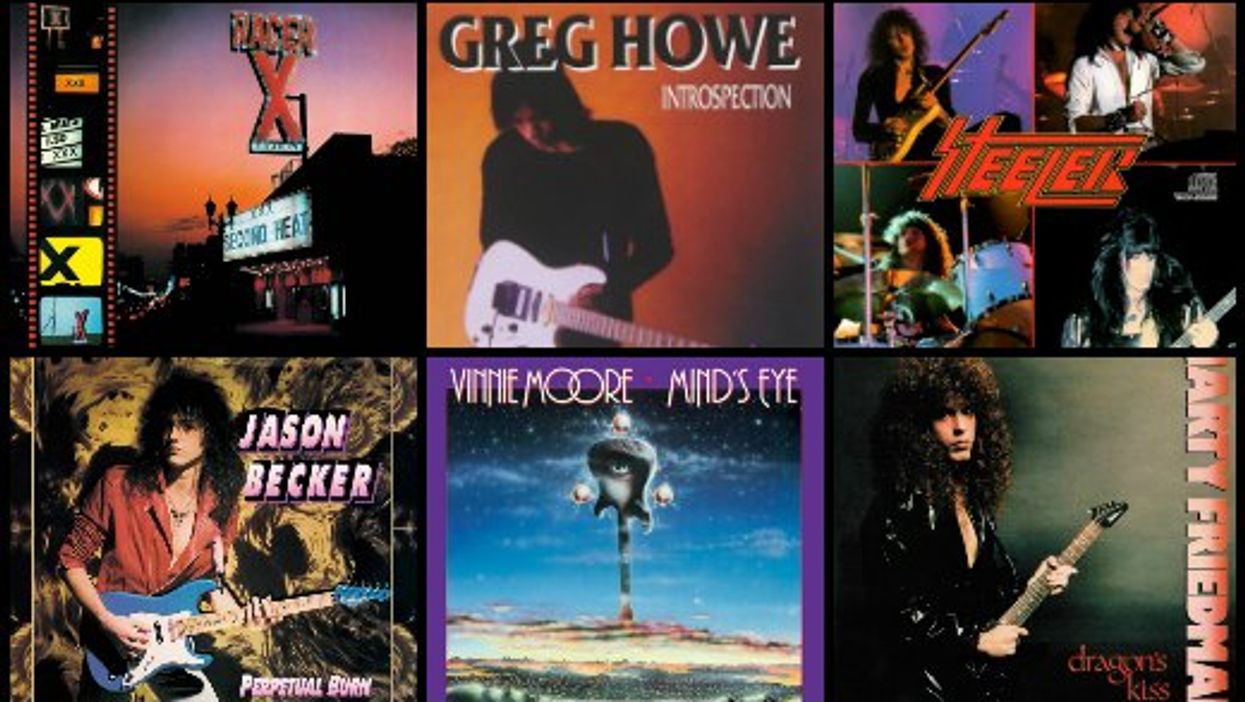
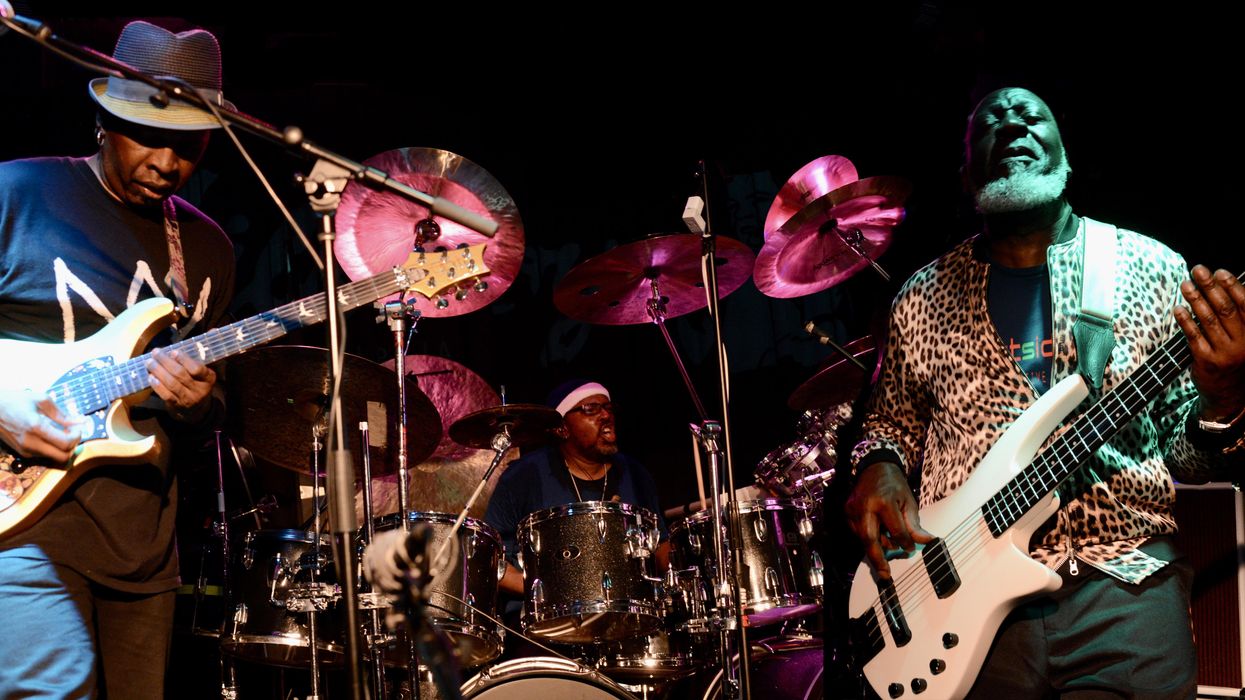


![Rig Rundown: AFI [2025]](https://www.premierguitar.com/media-library/youtube.jpg?id=62064741&width=1245&height=700&quality=70&coordinates=0%2C0%2C0%2C0)












 Shop Scott's Rig
Shop Scott's Rig
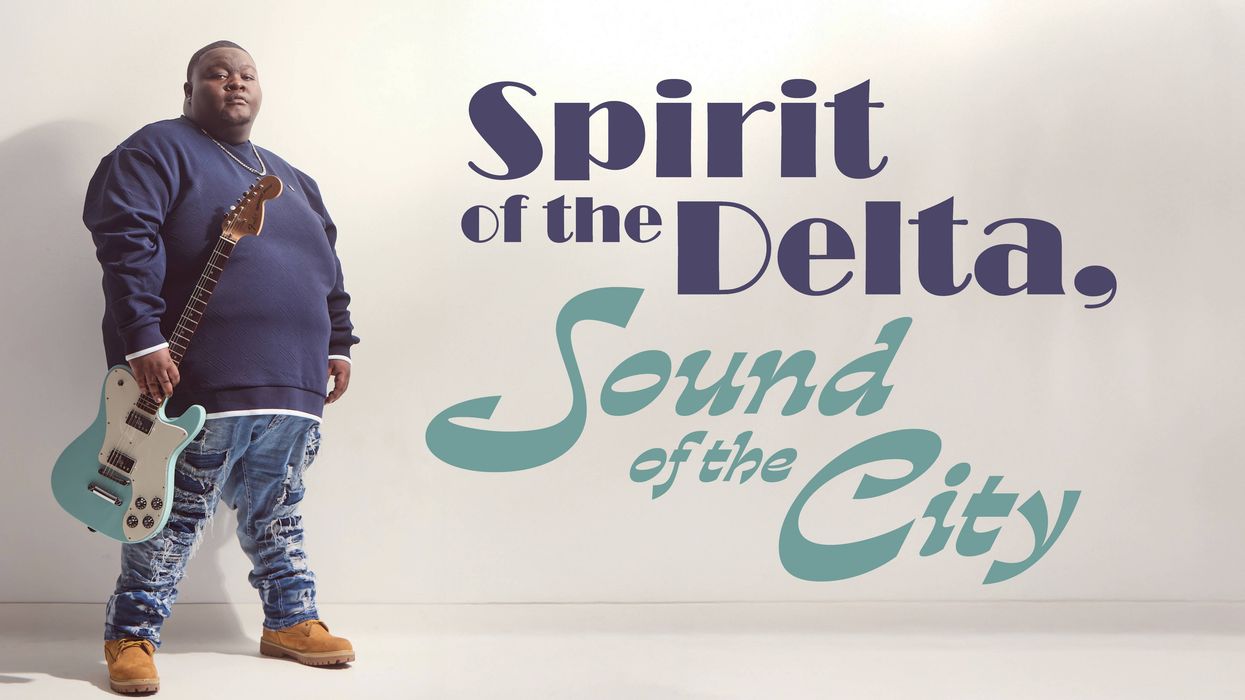









![Devon Eisenbarger [Katy Perry] Rig Rundown](https://www.premierguitar.com/media-library/youtube.jpg?id=61774583&width=1245&height=700&quality=70&coordinates=0%2C0%2C0%2C0)







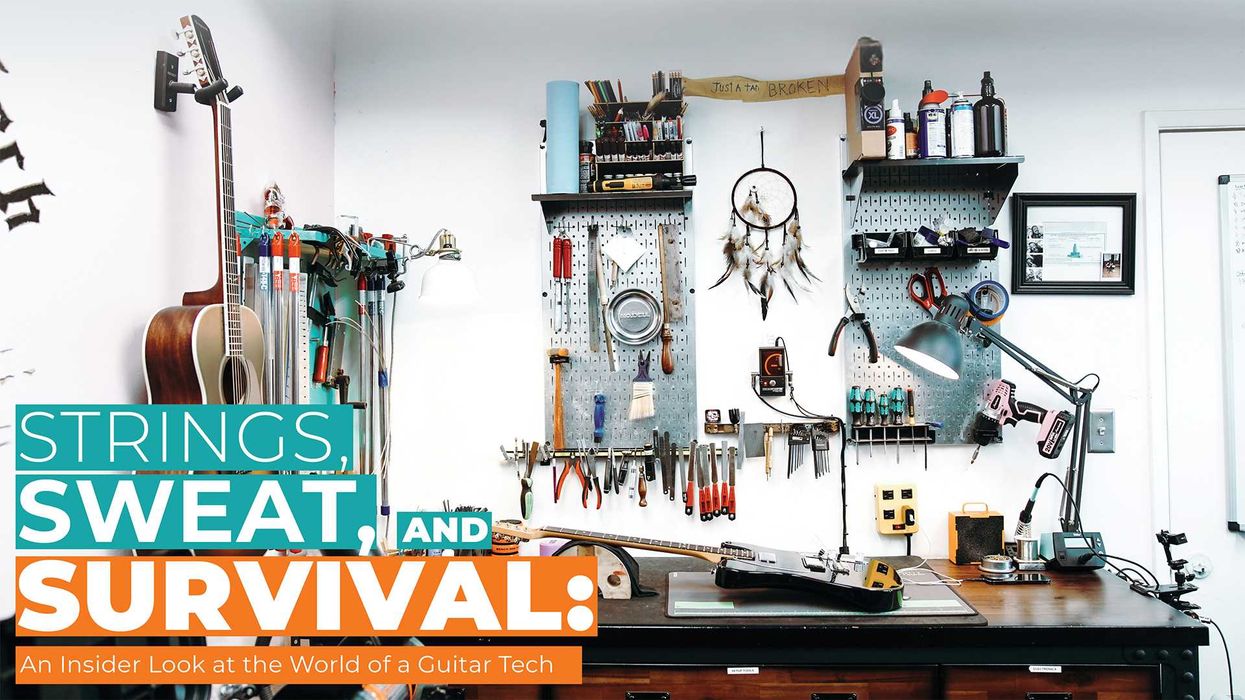
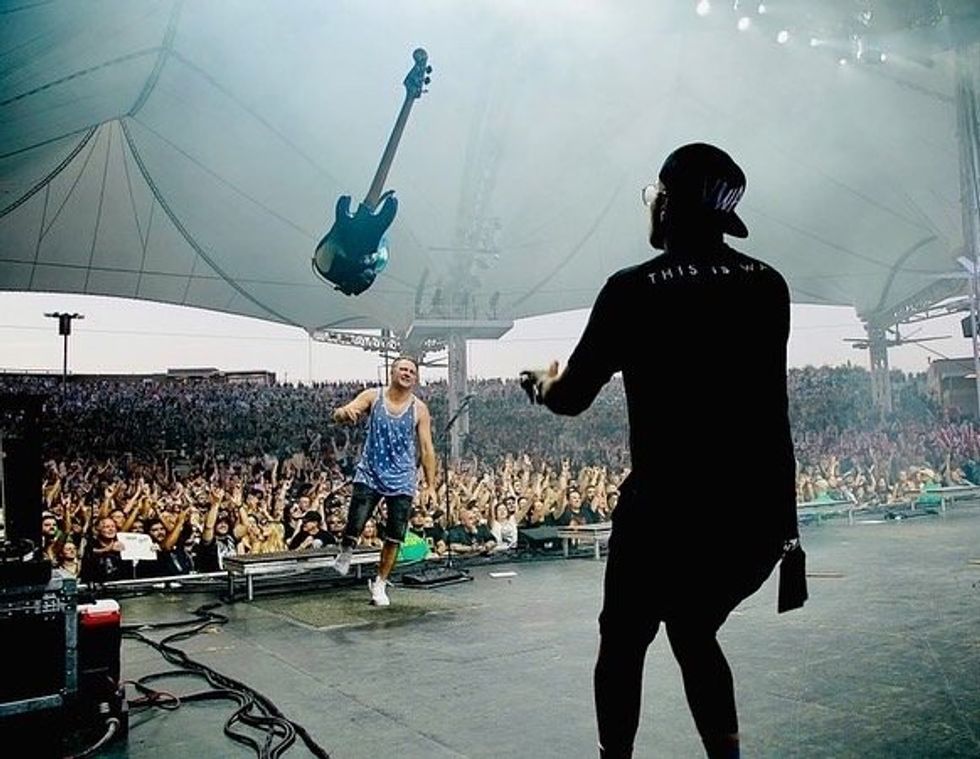 Luis Munoz makes the catch.
Luis Munoz makes the catch.